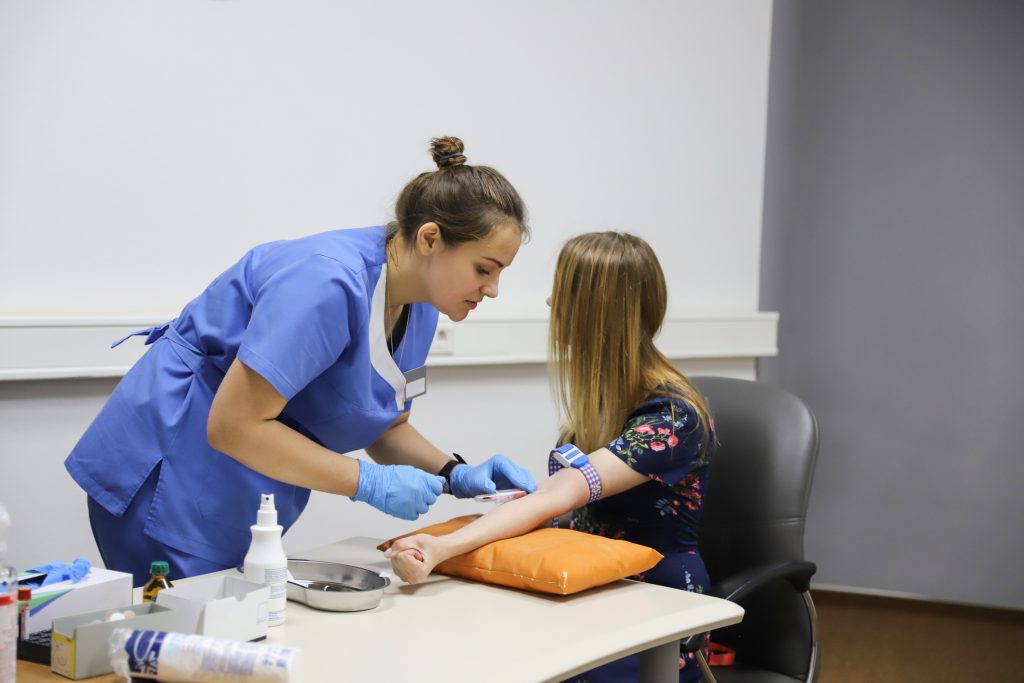4 Simple Techniques For Northeast Medical Institute - New Haven Campus Phlebotomy Course & Cna Class
4 Simple Techniques For Northeast Medical Institute - New Haven Campus Phlebotomy Course & Cna Class
Blog Article
The Best Strategy To Use For Northeast Medical Institute - New Haven Campus Phlebotomy Course & Cna Class
Table of ContentsThe 8-Minute Rule for Northeast Medical Institute - New Haven Campus Phlebotomy Course & Cna ClassNortheast Medical Institute - New Haven Campus Phlebotomy Course & Cna Class for DummiesThe Definitive Guide for Northeast Medical Institute - New Haven Campus Phlebotomy Course & Cna ClassGetting My Northeast Medical Institute - New Haven Campus Phlebotomy Course & Cna Class To WorkThe smart Trick of Northeast Medical Institute - New Haven Campus Phlebotomy Course & Cna Class That Nobody is DiscussingNortheast Medical Institute - New Haven Campus Phlebotomy Course & Cna Class for Dummies
The usage of such tools should be come with by other infection avoidance and control practices, and training in their use.For setups with reduced sources, cost is a driving factor in purchase of safety-engineered gadgets. Where safety-engineered gadgets are not available, competent use of a needle and syringe is acceptable.
labelling); transport conditions; interpretation of results for medical management. In an outpatient department or clinic, offer a dedicated phlebotomy cubicle containing: a clean surface area with two chairs (one for the phlebotomist and the other for the client); a hand clean basin with soap, running water and paper towels; alcohol hand rub. In the blood-sampling area for an outpatient division or facility, provide a comfy reclining couch with an arm remainder.
Getting The Northeast Medical Institute - New Haven Campus Phlebotomy Course & Cna Class To Work
Guarantee that the indicators for blood tasting are plainly specified, either in a written procedure or in recorded directions (e.g. in a research laboratory kind). At all times, follow the methods for infection prevention and control noted in Table 2.2. Infection prevention and control practices. Accumulate all the equipment needed for the procedure and place it within risk-free and easy reach on a tray or cart, ensuring that all the items are plainly visible.
Where the person is adult and mindful, adhere to the actions described below. Present yourself to the patient, and ask the patient to state their complete name. Check that the laboratory form matches the individual's identity (i.e. match the client's details with the lab type, to make sure exact identification). Ask whether the license has allergic reactions, phobias or has actually ever before fainted throughout previous injections or blood draws.
Make the person comfortable in a supine setting (if possible). Place a tidy paper or towel under the patient's arm. Talk about the examination to be carried out (see Annex F) and obtain verbal approval. The client has a right to reject an examination at any type of time before the blood tasting, so it is necessary to make sure that the client has comprehended the treatment.
Northeast Medical Institute - New Haven Campus Phlebotomy Course & Cna Class - Truths
Prolong the patient's arm and check the antecubital fossa or forearm. Find a vein of a good size that is noticeable, straight and clear. The diagram in Section 2.3, shows typical placements of the vessels, but numerous variants are feasible. The average cubital blood vessel exists between muscle mass and is typically one of the most very easy to penetrate.
DO NOT place the needle where capillaries are drawing away, due to the fact that this boosts the opportunity of a haematoma. The blood vessel must show up without using the tourniquet. Situating the blood vessel will help in identifying the right dimension of needle. Apply the tourniquet about 45 finger widths over the venepuncture website and re-examine the capillary.
Samplings from central lines carry a risk of contamination or wrong lab examination results. It is appropriate, but not optimal, to attract blood samplings when first presenting an in-dwelling venous gadget, before attaching the cannula to the intravenous liquids.
Getting My Northeast Medical Institute - New Haven Campus Phlebotomy Course & Cna Class To Work
Permit the location to completely dry. Failing to permit adequate contact time increases the danger of contamination. DO NOT touch the cleaned up site; specifically, DO NOT position a finger over the vein to guide the shaft of the revealed needle. It the site is touched, repeat the sanitation. Carry out venepuncture as complies with.
Ask the patient to create a hand so the veins are much more prominent. Get in the vein swiftly at a 30 degree angle or less, and remain to introduce the needle along the capillary at the most convenient angle of entry - CNA Classes. Once adequate blood has actually been gathered, release the tourniquet BEFORE taking article source out the needle
How Northeast Medical Institute - New Haven Campus Phlebotomy Course & Cna Class can Save You Time, Stress, and Money.
Take out the needle carefully and use mild pressure to the website with a clean gauze or dry cotton-wool round. Ask the person to hold the gauze or cotton wool in place, with the arm extended and increased. Ask the individual NOT to bend the arm, since doing so triggers a haematoma.

Not known Facts About Northeast Medical Institute - New Haven Campus Phlebotomy Course & Cna Class
Where possible, maintain the tubes in a shelf and relocate the shelf towards you - https://gordonmarvin28.wixsite.com/my-site-1/post/cna-courses-and-phlebotomy-training-at-northeast-medical-institute-new-haven-campus. If the example tube does not have a rubber stopper, infuse incredibly gradually into the tube as lessening the stress and speed used to move the specimen decreases the threat of haemolysis.

Report this page